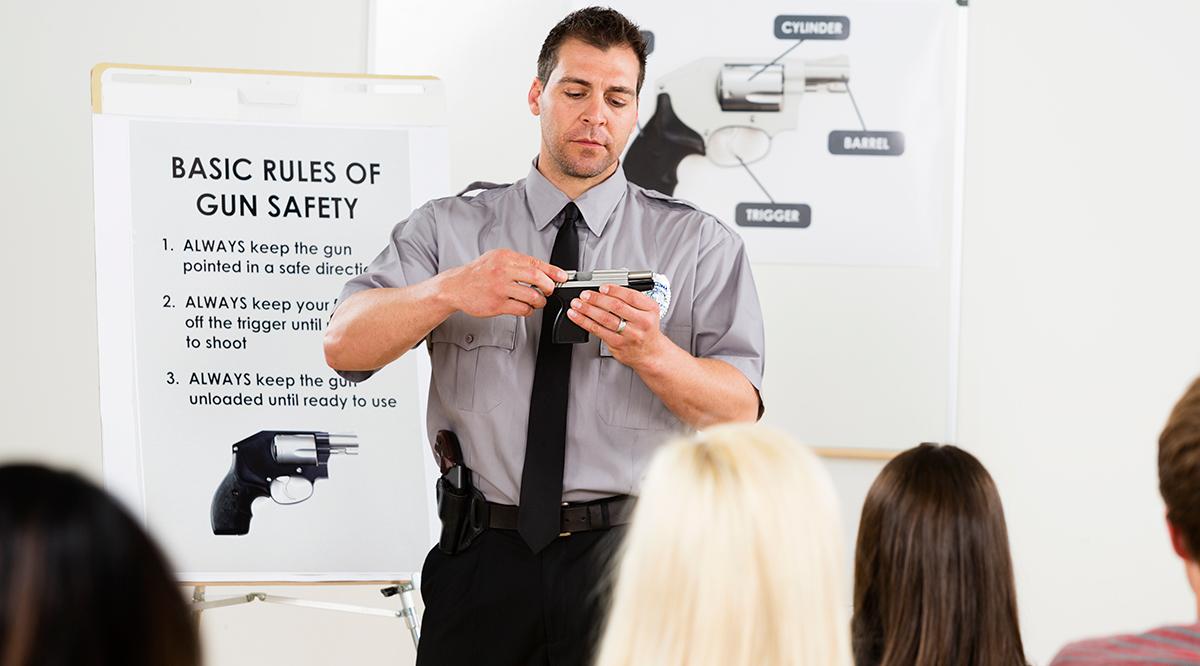Many US medical schools don’t include firearm injuries in their curriculum. Amelia Mercado and Taimur Siddiqui call for more teaching on this important public health issue
Firearm injuries have become an epidemic in the United States. In 2022, more than 48 000 US citizens died from firearm related injuries of all types—unintentional, suicide, and homicide—and in 2020 firearms surpassed motor vehicle accidents as the leading cause of death among US children and adolescents.12 Firearms are also the most fatal method of suicide in the US, with 89.6% of suicide attempts by a firearm resulting in death between 2007 and 2014.3 Additionally, in 2020 the US firearm homicide rate reached 6.1 per 100 000 people—its highest rate in more than 25 years.4 Clearly, firearm related injury is a public health issue, and, as such, healthcare workers have a part to play in its resolution.
With about a third of Americans owning a gun5 and approximately 4.6 million children living in homes with loaded and unlocked guns,6 prevention should start with counseling on safe gun storage. Healthcare consultations are an opportune moment for these conversations, but physicians have not yet normalized the topic of firearms in routine patient encounters. In part, this is because most US medical schools haven’t embraced teaching students how to counsel patients on firearm injury prevention, even in specialties such as pediatrics, where gun safety is critical for child safety.
Only 25% of US medical schools covered firearm related injuries in their curricula in the 2020-21 school year.7 This content is usually optional and is rarely incorporated into the required curriculum. A few medical schools are leading the way in changing this. For example, the School of Medicine at University of California San Francisco has implemented a small group session for all first year medical students that allows them to role-play counseling patients on firearm safety.8 Brown University’s Warren Alpert Medical School is implementing a four year program that will teach students about firearm epidemiology and safe storage counseling in their pre-clinical years so that they can apply these skills in clerkships during their third and fourth years.9
Students can lead change
How do we get more medical schools on board with teaching students these skills? As two second year medical students at Baylor College of Medicine, we opened this conversation up to our college’s faculty and were amazed by their receptiveness to dialog and willingness to support student-driven change. This is particularly notable given that Baylor College of Medicine is located in Texas, where citizens can openly carry guns without a permit once they’re over 21 years old and purchase an AR-15 assault rifle as young as 18 years old.
We’re currently working with staff to secure time for teaching students firearm injury counseling in compulsory pre-clinical courses. Baylor College of Medicine has set a tentative start date of October 2024 to implement this student-led curriculum segment, which was built in collaboration with the Massachusetts General Hospital Center for Gun Violence Prevention.10 To ensure that older classes are able to access training, we’re also hosting workshops across our medical school’s campus.
Our first piece of advice to other medical students who are passionate about this topic is to start a dialog with faculty. With enough conversations and referrals, you might find yourself speaking with staff in charge of curriculum development and gain champions along the way. Secondly, if your institution isn’t willing to make firearm injury prevention a compulsory part of the curriculum, see if they’re open to creating an optional elective. Many schools already offer optional elective courses on this topic, such as UMass Medical School, and they may be willing to exchange materials.11 Finally, start a workshop with student interest groups. Your fellow students may be more receptive to change than faculty in the short term, and demonstrating student interest in a workshop may persuade staff to roll out more formal training. Students don’t need to reinvent the wheel and can collaborate with their peers and reach out to institutions that are already teaching students about gun safety for resources.
Doctors should be able to discuss the topic of firearm injury prevention like any other health risk, whether it’s to adults presenting with suicidal ideation or families who have guns in their homes. Medical trainees should feel empowered to discuss firearm storage with patients across different settings. There are many extracurricular online training resources that can prepare students for these conversations, such as those offered by Stanford Medicine, the American Academy of Pediatrics, and the American College of Surgeons.121314 Yet medical schools also have a part to play in highlighting this knowledge and teaching students to confidently deploy these skills.
Gun violence has cost the health of many communities and requires healthcare professionals to intervene, but we need training and support from medical schools to do this work. If medical schools aren’t taking the initiative, student advocates should demand change from them. Let’s take an active role in curbing this epidemic.
Source: The BMJ







